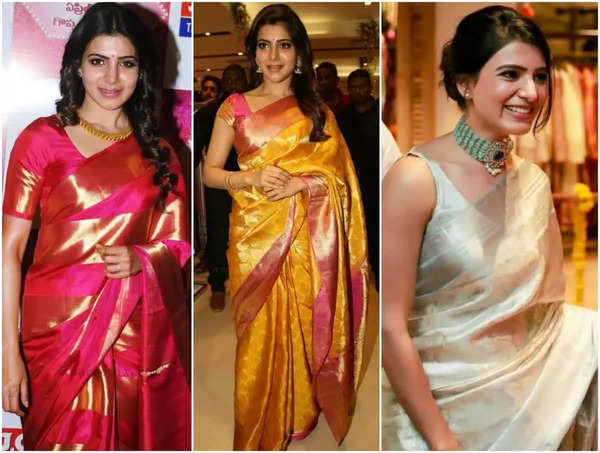Kanjeevaram saris, usually hailed because the “Queen of Silks,” maintain a prestigious place in Indian trend. Originating from the city of Kanchipuram in Tamil Nadu, these saris are famend for his or her beautiful craftsmanship, vibrant colours, and wealthy cultural heritage. Woven from pure mulberry silk and infrequently adorned with actual gold and silver threads, Kanjeevaram saris are an emblem of magnificence and custom, cherished by girls throughout India and the world.
The historical past of Kanjeevaram saris dates again over 400 years, with the craft believed to have been launched by the descendants of Sage Markanda, the grasp weaver of gods in Hindu mythology. Kanchipuram, often known as Silk Metropolis, grew to become a thriving middle for silk weaving attributable to its proximity to mulberry silk-producing areas and the patronage of South Indian royalty.
Kanjeevaram saris have performed a major position in Indian tradition, particularly in Tamil Nadu. They’re thought of auspicious and are an integral a part of weddings, festivals, and particular events. The intricate designs usually characteristic motifs impressed by temple structure, nature, and mythology, making every sari a murals that tells a narrative.

Making a Kanjeevaram sari is a labour-intensive course of that may take anyplace from 10 days to a number of months, relying on the complexity of the design. The method begins with the number of the best high quality mulberry silk, which is dyed in vibrant colors. The silk threads are then interlaced with zari (gold or silver threads) to create the saree’s distinctive patterns and borders.
The weaving course of includes three shuttles: one for the physique of the sari and two for the borders. The borders are sometimes woven individually and later connected to the physique with intricate precision. The pallav, or the ornamental finish piece of the saree, is often embellished with elaborate designs and motifs. The hallmark of a Kanjeevaram sari is its contrasting border and pallav, which stand out towards the primary physique of the sari, making a hanging visible impact.
Kanjeevaram saris are celebrated for his or her wealthy and various designs. Conventional motifs embrace peacocks, parrots, elephants, and flowers, in addition to geometric patterns and checks. These motifs are sometimes impressed by the carvings and sculptures present in South Indian temples, reflecting the area’s wealthy cultural heritage.
Lately, Kanjeevaram weavers have embraced innovation, incorporating up to date designs and colour combos to cater to fashionable tastes. Fusion designs, which mix conventional motifs with fashionable aesthetics, have turn out to be more and more standard, attracting a youthful era of sari fanatics. Regardless of these improvements, the essence of the Kanjeevaram sari stays rooted in its conventional craftsmanship and timeless attraction.
Kanjeevaram saris have transcended their conventional roots to turn out to be a worldwide trend assertion. Famend designers and trend homes have integrated Kanjeevaram silk into their collections, showcasing its versatility and magnificence. Celebrities and trend icons, each in India and overseas, have been noticed carrying Kanjeevaram saris at numerous high-profile occasions, additional cementing their standing as an emblem of luxurious and class.
Bridal trend, particularly, has embraced the grandeur of Kanjeevaram saris. Brides usually select Kanjeevaram saris for his or her marriage ceremony day, valuing their wealthy colours, intricate designs, and the sense of custom they embody. The saris are sometimes handed down by means of generations as heirlooms, cherished for his or her enduring magnificence and cultural significance.
Kamala Harris ‘Will get Assist Of 4.4 Million Indian-Individuals’ | Massive Cheer From ‘Samosa Caucus’
Regardless of the widespread recognition of Kanjeevaram saris, the standard weaving business faces a number of challenges. The labor-intensive nature of the craft, coupled with the rising price of uncooked supplies, has made it more and more troublesome for artisans to maintain their livelihoods. Moreover, competitors from machine-made imitations and altering shopper preferences pose important threats to the survival of conventional Kanjeevaram weaving.
Efforts are being made to protect and promote this timeless artwork kind. Authorities initiatives, non-profit organizations, and trend designers are working collectively to help the weavers and make sure the continuation of their craft. Coaching packages and workshops goal to equip younger weavers with the talents wanted to hold ahead the custom, whereas additionally encouraging innovation and fashionable design sensibilities.



